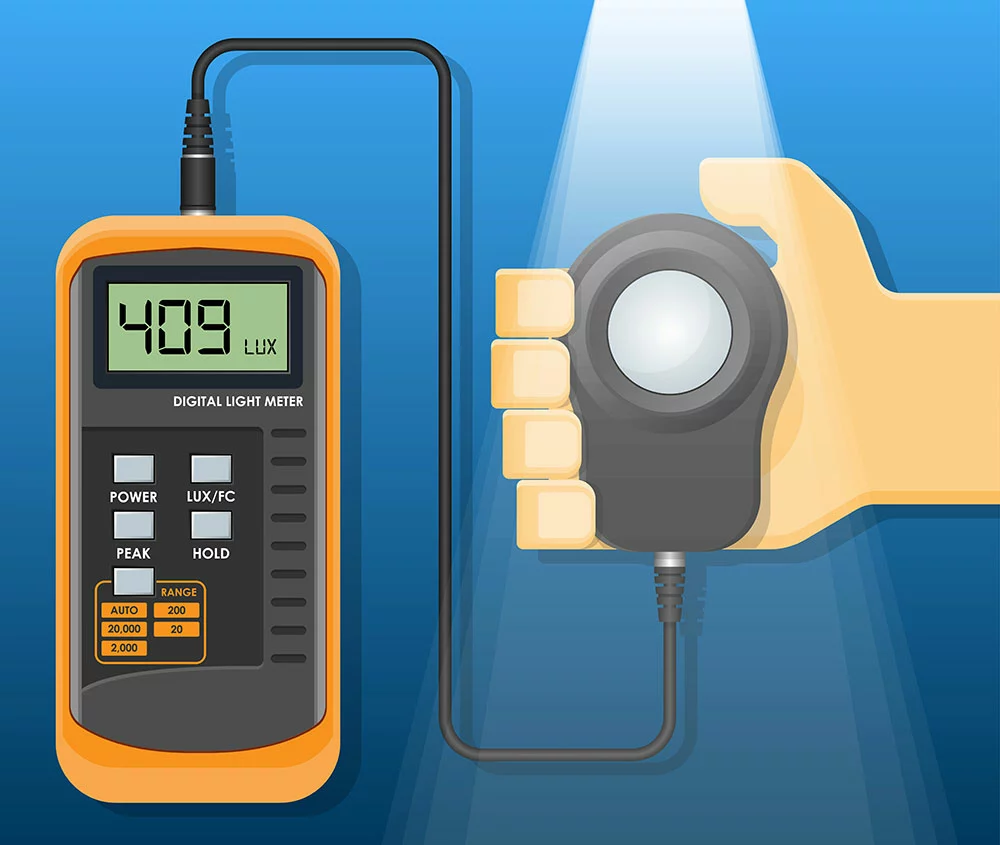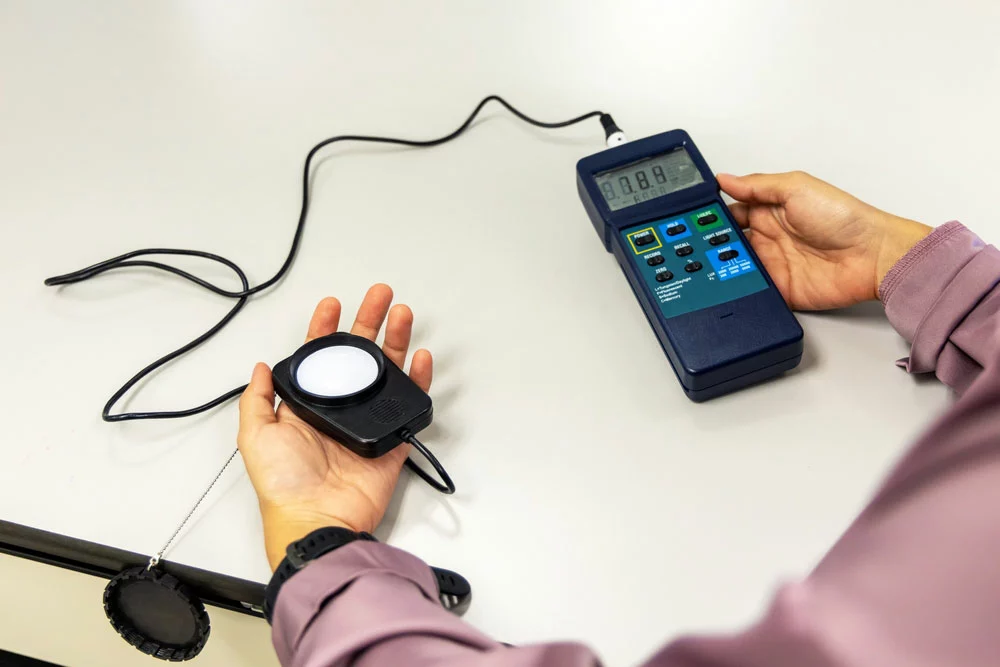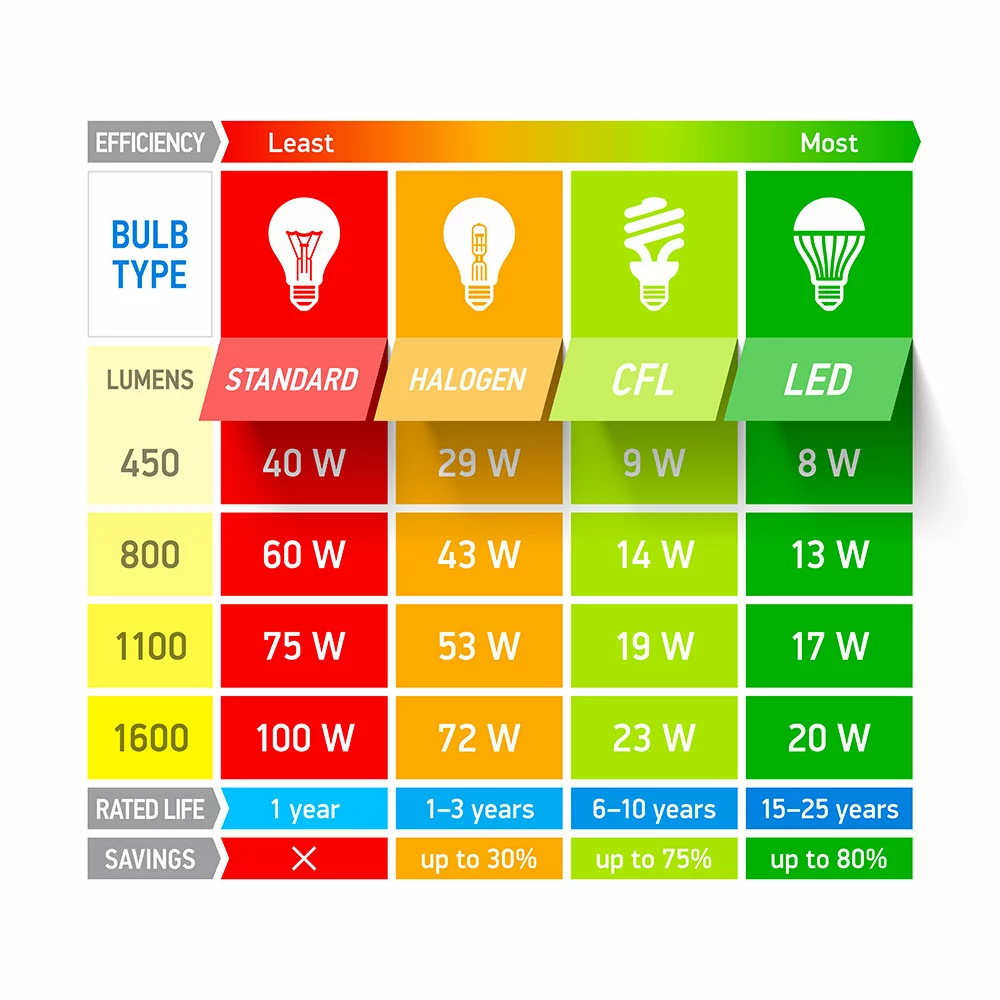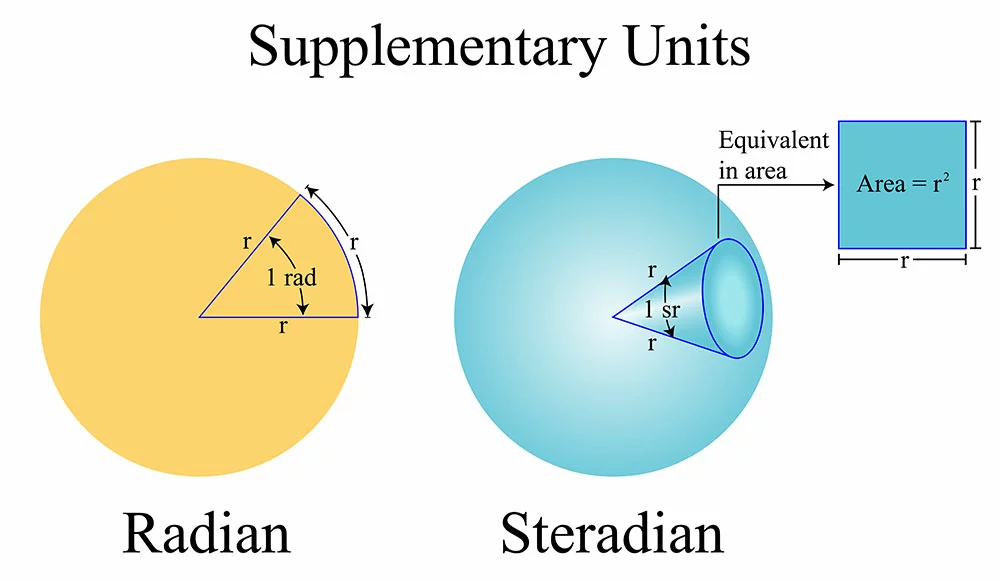Most people use the lumen output rating when buying LED bulbs to choose the most suitable unit. However, you can measure light using different units and techniques. We will do a lux vs. lumen comparison to compare two of the most typical light measurement units. Although different, these measurement units are in some ways related, so you can define one using the other. Let’s get started!
Lux
Lux (unit symbol lx) gives a measure of illuminance or illumination, which is the light falling on a surface. One lux is the illuminance produced by one candela on a surface perpendicular to the light rays, with the light source being a meter away from the surface.

A graphic image shows how a digital handheld light lux meter measures lux. It uses a photodiode sensor LDR photometer.
Therefore, lux corresponds to the illuminance obtained when each square meter on the surface receives a luminous flux equivalent to one lumen. You can express it using the following formula.
1 lux = 1 lumen/m2
But you can measure lux levels from varying distances, though you can only compare two lamps or bulbs if they are at an equal distance from the surface.
Alternatively, you can use a light lux meter for lux measurement from any space or surface.

A handheld light lux meter
Lumen
Lumen is a measure of luminous flux, which shows the total amount of visible light emitted by a light source and spread out in all directions. However, most of those light particles might not reach the surface.
The luminous flux intensity usually depends on the source’s power and light color. Also, a smaller radiation angle creates a higher luminous intensity if the luminous flux remains constant.

The lumen rating for different bulb types
In technical terms, you can define a lumen as the luminous flux of the intensity of one candela emitted by a light source covering a 1-steradian solid angle.
1 lumen = 1cd/sr
Candela
As you can see, a third variable pops up when defining lux and lumen. Indicated by the symbol cd, candela has its origins in the brightness of a candle (candela is Latin for candle). However, the term has a more precise SI definition. It is the amount of light emitted from a 3D angular span.
A light beam with a strength of a single candela and a 1-steradian space angle (cone-shaped beam with a 65.5° opening angle) has a luminous flux equal to one lumen. Therefore, one candela is equal to one lumen per steradian.

A steradian angle (3D angle compared to the tip or radian of a circle)
While lumens show the light intensity in all directions, candela units define the light intensity at a specific side or angle. It captures the power and volume of the light.
High candela ratings are necessary for applications like car headlights, spotlights, and other directional lights.

A beam from a car’s headlight
On the other hand, a beam emitting one lumen on a surface measuring one square meter gives an illuminance equal to one lux. Therefore, a lux is equal to one lumen per square meter.
Lumen vs. Lux
| Lumen | Lux |
| A measure of luminous flux | A measure of illuminance |
| Luminous flux from a light source of a single candela through a 1-steradian solid angle | Number of lumens per square meter |
| Measures the light output (photon output) from light sources weighted using the luminous function to cater to the human eye’s sensitivity. | Measures how bright light appears, taking into account the spread of light over a particular area |
| The amount of lumens is constant when measured from a fixed source | Lux decreases with an increase in distance |

A lumen infographic showing the difference between lumen and lux
Why You Need To Understand These Units of Measurement
Since we have multiple light sources, such as incandescent, halogen, fluorescent, and LED lights, each type illuminates spaces differently. Therefore, you need to consider these standard units to compare the light bulbs, then pick the most suitable light fixture for your project.

Different bulb types available in the market
Which is the Best Unit For Measuring Light?
It depends on the application. For instance, general room lighting requires a high light output, so you should check the lumen rating. However, lux and candela values should have a higher priority if you want to focus the light on some objects, such as architectural features or paintings in a gallery.

Spotlights highlighting paintings in a gallery
Consider the project at hand, which will define the objectives you want the lights to achieve, then pick the most optimal light for that task.
Lux vs. Lumen: Ideal Lux Lighting
The following are the recommended lux ratings for different commercial or residential spaces.
- Living rooms and bedrooms: 30-50 lux
- Kitchen: 100 lux
- Corridors, restrooms, and elevators: 100-150 lux
- Dining room: 150-200 lux
- Classrooms, meeting halls, and libraries: 250 lux
- Offices and retail spaces: 500 lux
- Indoor sports venues and factories: 750 lux
- Garage: 500-1000 lux
- Operating rooms: 1000 lux

An operating room with multiple bright lights. Note the bright spot on the operating table with a high lux.
Wrap Up
In conclusion, lux and lumen are two of the most typical units of light brightness. Although related, they refer to different things, and you should prioritize each when dealing with specific applications. We hope the information above has been insightful, and don’t hesitate to contact us if you have any questions or comments.
